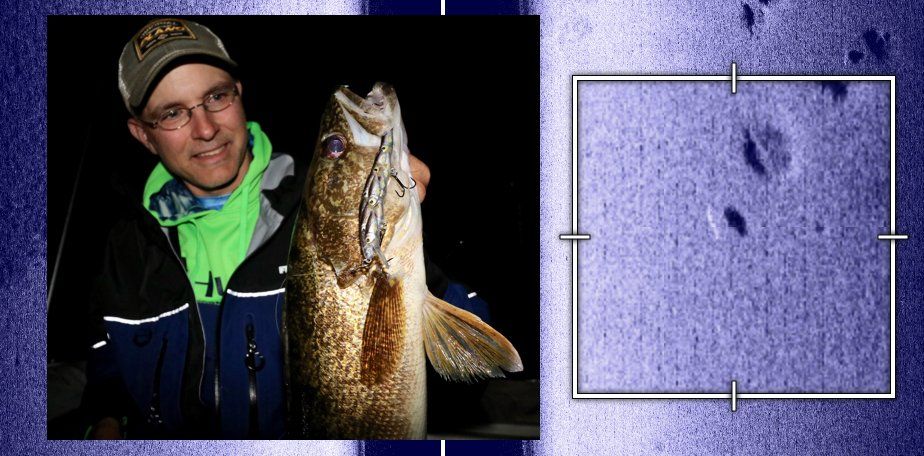
The remarkable power of MEGA Imaging for shallow water fishing
Dr. Jason Halfen
The Technological Angler
The cooling waters of fall draw impressive numbers of apex predators into the shallows, where they gorge on a buffet of baitfish in advance of winter’s arrival. Not far behind these bass, walleye, musky and even sumo panfish are intrepid anglers, bundled against the elements to hook, land, photograph and release their biggest, and perhaps, final fish of the calendar year.
One of the most important tools in contemporary anglers’ toolboxes for finding and catching these shallow water fish is MEGA Side Imaging from Humminbird, available on select SOLIX and HELIX units. The MEGA Imaging frequency, 1.2 MHz, provides the highest resolution available in any side-viewing sonar application, yielding Side Images with unprecedented clarity and detail. For the shallow water angler, access to crisp, clear Side Images makes locating structural elements, and the fish relating to them, easier than ever before. The results? More fish in the net, more smiles on faces, and more memories to carry you through the long winter months that lie ahead.
During a recent trip targeting late fall walleyes on north-central Minnesota’s Leech Lake, the power of MEGA Imaging to identify shallow water predators provided a distinct advantage for our party, particularly when faced with very cold (41-44 oF) water, biting fall winds, and driving rain. Even in the relatively shallow water where we targeted oversized walleyes with trolled crankbaits under the cover of darkness, MEGA Side Imaging clearly revealed the presence of prowling walleyes, as single fish as well as small groups, helping us to focus our efforts on distinct areas that held active fish, rather than simply fishing memories from successful trips gone by.
What should anglers look for when it comes to identifying fish with MEGA Imaging? A bright (frequently white, depending on your Side Imaging color palette) primary sonar return from the fish, and an associated dark spot, to the side of the fish opposite the boat, that represents the fish’s sonar shadow: a portion of the bottom that cannot be imaged with the MEGA Side Imaging beam because it is blocked by the fish’s body. A clear example of this pair of features is shown in the zoom box on this screen capture from my Humminbird SOLIX 12. Note that the white sonar return and the dark shadow are not touching; rather, they are separated. This is characteristic of a fish that is on the prowl, suspended off the bottom. The distance between the white sonar return and the dark sonar shadow increases as the fish suspends further off the bottom, but as we imaged this fish in less than 9 feet of water, it doesn’t have that much vertical room to work with. Based on the depth of the fish that we passed directly over and observed with traditional 2D sonar, I would guess that this fish is 12-18 inches off the bottom: hunting, and highly catchable.
One of the most important tools in contemporary anglers’ toolboxes for finding and catching these shallow water fish is MEGA Side Imaging from Humminbird, available on select SOLIX and HELIX units. The MEGA Imaging frequency, 1.2 MHz, provides the highest resolution available in any side-viewing sonar application, yielding Side Images with unprecedented clarity and detail. For the shallow water angler, access to crisp, clear Side Images makes locating structural elements, and the fish relating to them, easier than ever before. The results? More fish in the net, more smiles on faces, and more memories to carry you through the long winter months that lie ahead.
During a recent trip targeting late fall walleyes on north-central Minnesota’s Leech Lake, the power of MEGA Imaging to identify shallow water predators provided a distinct advantage for our party, particularly when faced with very cold (41-44 oF) water, biting fall winds, and driving rain. Even in the relatively shallow water where we targeted oversized walleyes with trolled crankbaits under the cover of darkness, MEGA Side Imaging clearly revealed the presence of prowling walleyes, as single fish as well as small groups, helping us to focus our efforts on distinct areas that held active fish, rather than simply fishing memories from successful trips gone by.
What should anglers look for when it comes to identifying fish with MEGA Imaging? A bright (frequently white, depending on your Side Imaging color palette) primary sonar return from the fish, and an associated dark spot, to the side of the fish opposite the boat, that represents the fish’s sonar shadow: a portion of the bottom that cannot be imaged with the MEGA Side Imaging beam because it is blocked by the fish’s body. A clear example of this pair of features is shown in the zoom box on this screen capture from my Humminbird SOLIX 12. Note that the white sonar return and the dark shadow are not touching; rather, they are separated. This is characteristic of a fish that is on the prowl, suspended off the bottom. The distance between the white sonar return and the dark sonar shadow increases as the fish suspends further off the bottom, but as we imaged this fish in less than 9 feet of water, it doesn’t have that much vertical room to work with. Based on the depth of the fish that we passed directly over and observed with traditional 2D sonar, I would guess that this fish is 12-18 inches off the bottom: hunting, and highly catchable.
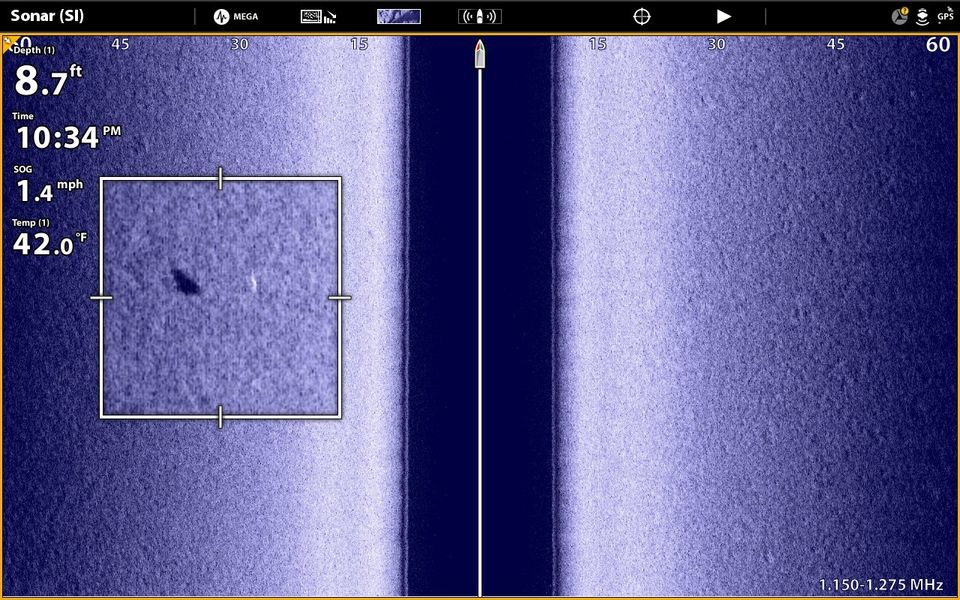
The relationship between the bright sonar return and its dark shadow is different for object sitting on the bottom, like a rock. In the second SOLIX 12 screen capture, we see a field of scattered rock and small boulders. Note that the slightly wavy appearance of the image is because we were fishing a wind-blown area, causing the boat and its transducers to rise and fall. For each of the rocks, the bright primary sonar return is in direct contact with the dark sonar shadow. This connection is characteristic of an object sitting on the bottom. In this instance, the distance that a sonar shadow extends away from the sonar return is indicative of the object’s size: small rocks cast small shadows, while larger rocks have longer, more prominent shadows.
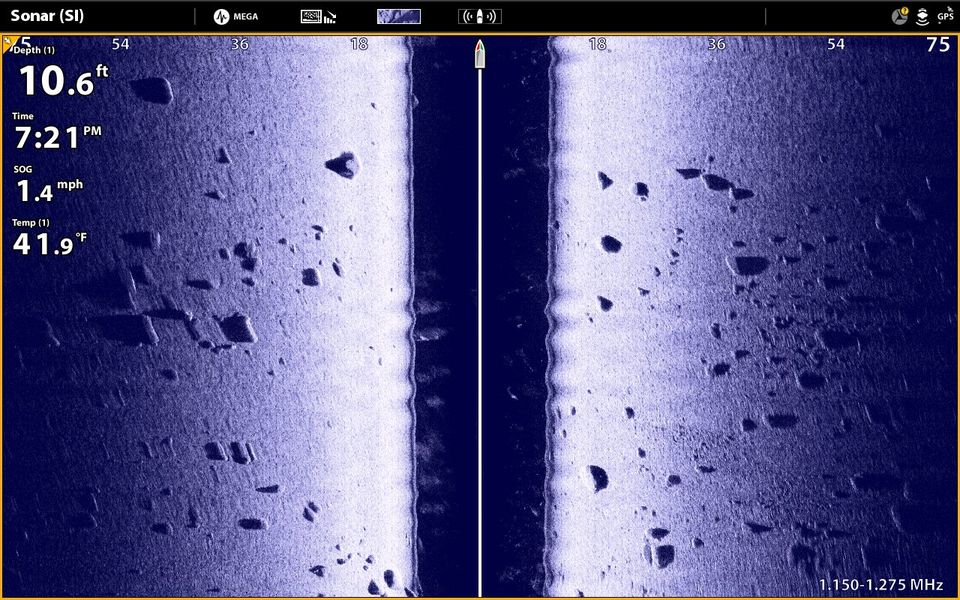
Let’s turn our attention back to fish. MEGA Side Imaging is so powerful at revealing fish, and its results so conclusive (fish are either present and obvious in a Side Image, or they are not), that we put complete trust in MEGA Imaging to help us identify key trolling areas, eliminating dead water and putting more fish in the boat on every trip. Here are a couple of additional examples, showing small groups of walleyes suspended off the bottom in water less that ten feet deep. The first image has a handful of walleyes off to the right of the boat.
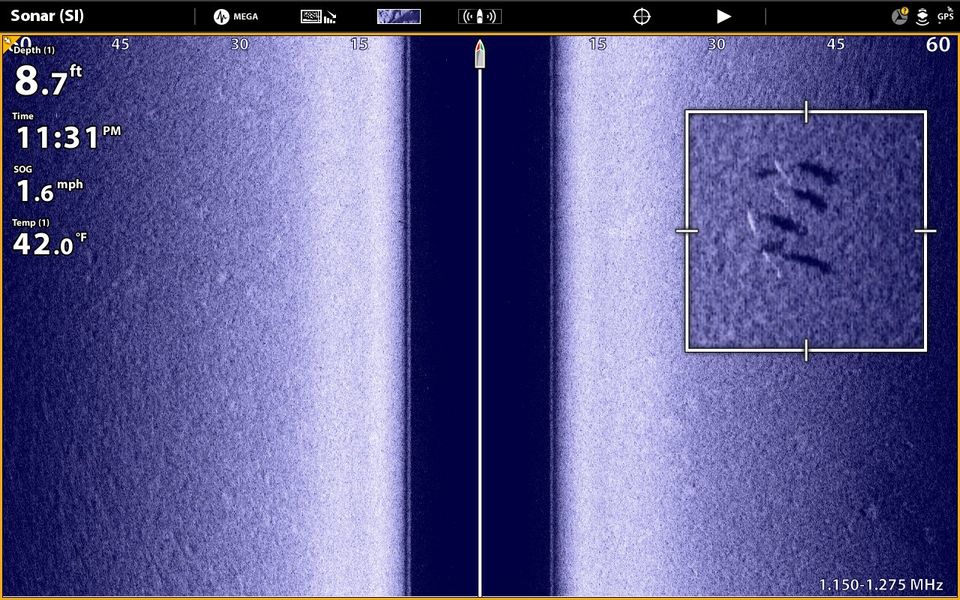
Here are two fish on the left side of the boat.
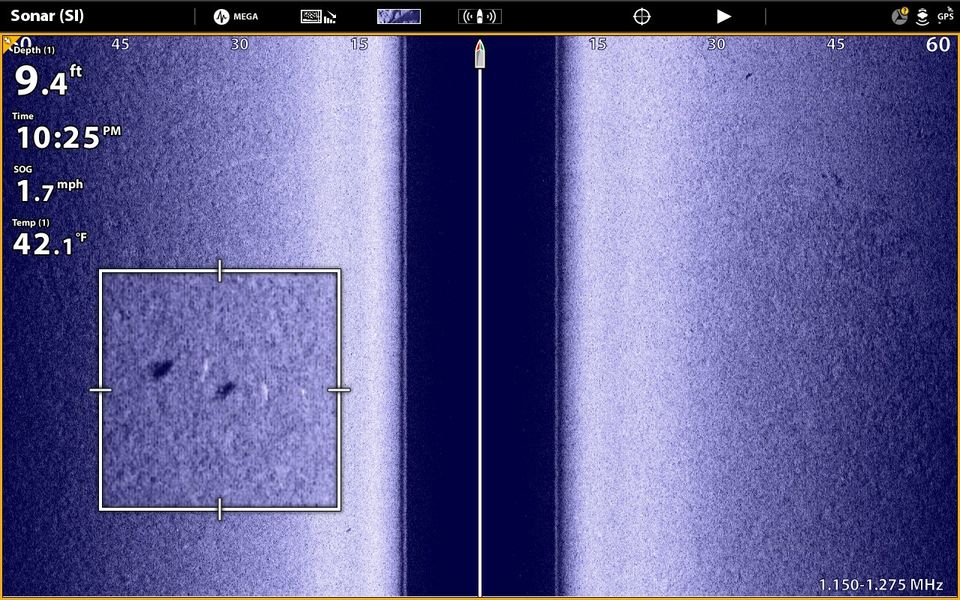
Occasionally, when fishing over hard bottom (which is generally brighter in color), the white sonar return from the fish can be tough to spot. In these instances, however, the fish’s dark sonar shadow remains prominent and obvious, and serves as the primary indicator that a fish is present. You’ll see an example of this situation in the next screen capture, with three dark sonar shadows that are easy to see, but sonar returns that are faint or absent. Careful adjustments to your Side Imaging sensitivity and contrast can make those bright sonar returns “pop” a little better, but from the perspective of using MEGA Side Imaging as a rapid, fish-finding tool, a dark shadow is just as informative as a bright spot.
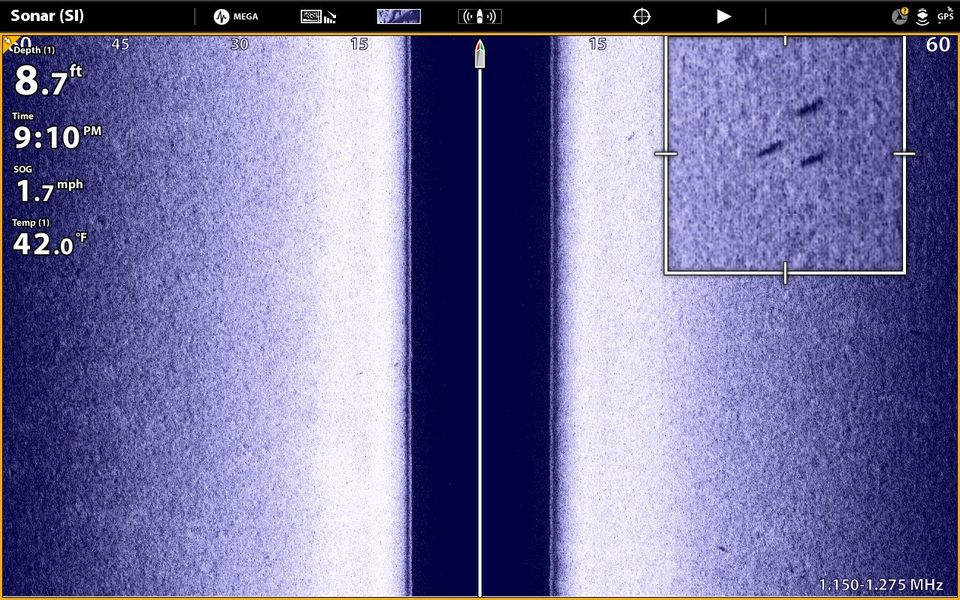
Want to collect MEGA Side Images like these on your Humminbird SOLIX? As you can see, my boat speed on this trip was between 1 and 2 mph – typical trolling speeds for cold water walleyes. I was using the MEGA Imaging frequency with CHIRP enabled. My Side Imaging sensitivity was 12, with Side Imaging contrast 8 and Side Imaging sharpness off. My Imaging SwitchFire was set to MAX, and I typically operated with a Side Imaging range of 60-75 feet. Quick and easy adjustments to make, providing remarkable results on my SOLIX display and in my landing net.
Humminbird MEGA Imaging is a powerful tool for the shallow water angler, no matter which month happens to be on the calendar. Put MEGA Imaging to use the next time that you’re on the water, and you’ll catch more fish and have more fun – on each and every trip!
Humminbird MEGA Imaging is a powerful tool for the shallow water angler, no matter which month happens to be on the calendar. Put MEGA Imaging to use the next time that you’re on the water, and you’ll catch more fish and have more fun – on each and every trip!